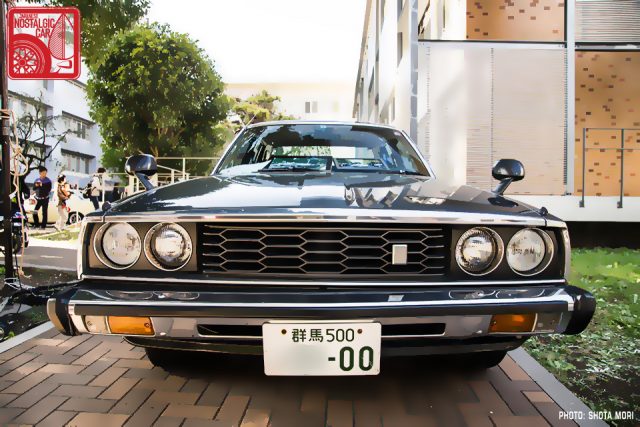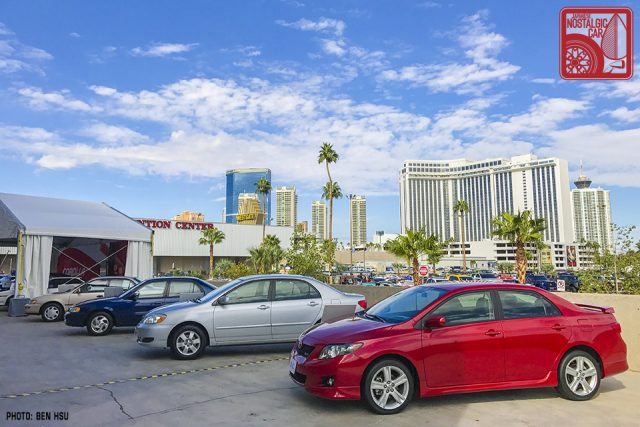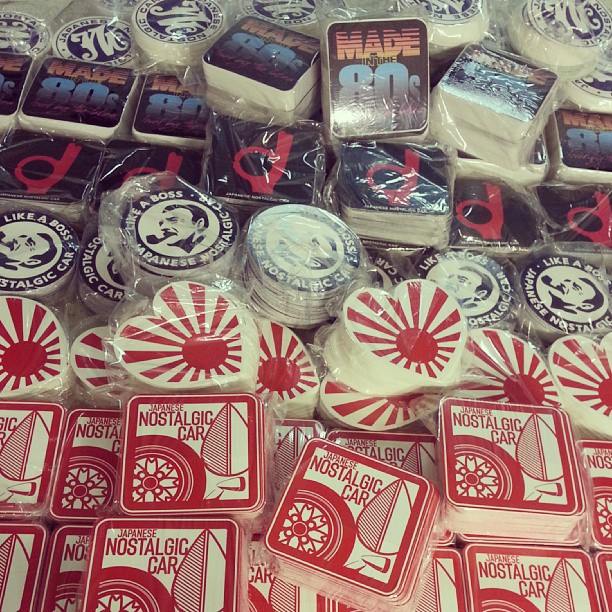
On this day 45 years ago, August 8, 1977, the fifth-generation Nissan Skyline debuted. We know the car today by its nickname, the Skyline Japan. It originated from the car’s ad campaign slogan, which claimed (by way of translation), “A famous car born from the Japanese climate.” Of course, back in 1977 the Skyline name was barely known outside of Japan and without the name, there wasn’t much about the mid-size sedan that signified it as uniquely Japanese. Hindsight offers us a different perspective but perhaps readers can identify a car that best represents Japan.
What is the most “Japanese” car?
The best comment by next Monday will receive a prize. Scroll down to see the winner of last week’s QotW, “What is the best engineered Toyota?”

From the moment we asked the question, we expected to have several nominations of various cars that weren’t Toyotas at all, but which wore the Lexus badge. You did not disappoint, with nominations for the GS/Aristo both old (Lupus) and new (Long Beach Mike), the SC/Soarer (dankan), LS (J Wilson), and LFA (fuel10922). Honorable mentions went to cars that were very Lexus-like, such as the Crown (Brian Trevan) and Century (Michael K).
However, the winning answer bucked the trend and made us reconsider the premise of the question itself. Thank you, RamenEater3000, for the new perspective:
Corolla (All variants). A car so ubiquitous, and ticking so many different boxes for different people, with different use cases. A Corolla can take the guise of utilitarian, bording, practical, or light, sporty, quick – but the one common, undeniable factor across all models, in all markets across the world, is that the Corolla is synonymous with reliability. That is why I nominate it as the “best engineered Toyota”. In my opinion the best engineering is not defined by how complicated or cutting edge a car is, but by the spectacular acheivement of designing a well rounded, reliable, durable and enjoyable car, able to be manufactured and sold at a modest price point. Further (and perhaps even more importantly) with simple engineering that keeps replacement parts, repairs, and maintenance costs low for long term ownership.
Omedetou, your comment has earned you a set of decals from the JNC Shop!







The most Japanese car … hmm … difficult, very difficult as there are two I have in mind that, while not world beaters themselves opened the door. came out about the same time, leading the way. I’d like to say I’ve owned both but, had only one of them. I guess you’d like to know what they are, right?
OK, the first one is the Subaru 360 and it’s variants. I remembered when they came out in 1969 … the only car banned from the state of New Jersey, a feat replicated years later in West Virginia’s banning the Jeep Liberty with the roof lights. I saw one at the auto show and, wanted one … just having the brochure wasn’t enough. My Ford service manager father said “Nope”. Thus, ending to me a concept of coolness not attained in having such a neat little car,
The Ladybug, as it’s been yclept (hey, there’s THAT word again!) in Japan. Was designed for the narrow streets and, smaller sizes of the people and, to escape heavy taxes due to horsepower. Now a nice one is worth it’s weight in sushi if you’ve a yen for one.
The other one, I’ve had and loved … the Honda Z600 Coupe. While awaiting my honorable discharge from the Army at Fort Jackson, SC, I was driving around in the Dodge Colt I’d bought over there used and, shipped back (long frightening story that … no further words needed). The Honda was at a used car dealer and, I immediately offered to trade. Good thing too as, I stopped in to pick up my plate after making the deal and, was told the Colt died and to get out! After managing to drive from there all the way to Phoenix, AZ Iwas quite aware of the Honda’s toughness. I got it with 72,000 on it and, it lasted for over 110,000. I had the interior redone from ugly orange cloth to a tasteful black/red with white piping, minilites and a window tint helped. Only a hailstorm was able to end its life. It seemed that the car just gave up after that and, it was sold to a shop that worked on it for parts.
Both of these can still be found … if not in running shape but, restorable ones for decent money. I miss my Honda SYNARA … but, he lives on in the plate of my Nissan S-Cargo!
In Kuwait we know Skyline since 1969 , the dealer imported the first GTR four doors to Kuwait. and then we got the years after that. The most famous Skyline(240K GT) was from 73 to 77 ….
Going to go with the duo of the Corolla and the Civic. Speaking primarily from my experience in Southern California, I can’t think of a single Japanese car I’ve seen on the road more than either of these 2 models across all generations. The only things that come close, IMO, are their step ups in the Camry and Accord. They do their jobs with very little fuss. They stick to tried and true technology so you know they’re dependable. They don’t cost much for what you get out of them. And they have some really cool performance models just to prove the naysayers wrong when they say Japanese cars are disposable cereal box toys. It all falls in line with my interpretation of the Japanese proverb “The nail that sticks out gets hammered down” in that they’ll fall in line and do what you need them to do when you need them to do it. They can do something different when _they_ want to, then fall right back in line again.
The Kei car, in my opinion, really defines THE Japanese car. Compact, well-packaged, nothing superfluous, “cute,” and efficient. The Kei car doesn’t seem to do well in any other non-Asian country, as those folks like the bigger machines. Imagine seeing a Daihatsu Hijet on the interstate in the Southern states, just not going to work. I think they tried bringing the Kei car to Europe multiple times, the public over there didn’t catch on either. But in its home turf, the OEMs designed it FOR Japan.
It is very suted to to Jaoan, but Kei cars have done reasonably well in other countries from time to time sometimes with some minor changes that take then outside strict Kei spec such as engine size as there’s no reason to limit them to 660cc/550cc/360cc
The Daihatsu Hijet is actually pretty successful outside Japan – it’s manufactured in China by FAW and they pop up in different specs in a lot of south east Asian countries. It and the Suzuki Carry made inroads in the UK/Irish market but what killed that is they were mostly petrol and the powers that be decided that for VAT purposes only Diesel would be reimbursable as a business expense. An electric version of the Hijet is sold as the Piaggio Porter in Europe (though the “regular” porter has moved to a larger in-house platform).
The Suzuki Fronte coupe was sold in the UK with a 1 litre engine.
The Suzuki Cappuccino was officially sold in the UK for two years, but stricter European emissions regulations meant it had to be taken off sale.
The Suzuki Jimny has had reasonable success in Europe, only changing (and frankly ridiculous) changing CO2 rules have forced off sale in many countries. It’s not kei spec in Europe due to slightly wider arches, rear spare wheel and larger engines offered (1.3 being the most common)
The Suzuki Wagon R was quite popular in its own right and was also sold as the Opel Agila.
What will tend to prevent future official imports of Kei cars in Europe is our increasingly over the top rules on active safety and emissions which are sort of counter-productive.
It’s harder to do grey imports now due to shifting rules on CO2/type approval, but Ireland where I’m from has in the past had an incredible amount of grey import JDM from taxi fodder and Toyota Aquas to Skylines – which has included a fair amount of Kei stuff.
It’s not that they wouldn’t suit places outside Japan, it’s that the EU is too blinkered to see the advantages of small relatively inexpensive Kei cars rather than everything must be an unaffordable heavy EV with “intelligent” speed “assistance” and other absolute nonsense adding to the price of the vehicle.
I thought about a few different cars; the Century, Kei cars as a class, etc. but I think one car really stands out in how ubiquitous it is and how much it embodies the Japanese mindset of continually striving to be absolutely excellent at something through constant refinement:
The Mazda Miata/Roadster/MX-5.
A car built for the love of driving, embodying a philosophy of uniting the driver and vehicle (jinba ittai), and being continuously refined for three decades now. Perhaps no specific part of the car is the best in the world, instead it’s the overall integration and refinement that makes these cars so unique.
Ask anyone and they know what a Miata is, even people who aren’t “car” people. As an ambassador for Japan I can’t think of a better vehicle.
..but wasn’t the MX5 an American auto journalists idea, inspired by British and Italian roadsters and designed in California?
Sure it’s got a lot of Japanese DNA, but I’d see it as more global, universal thing – which is reflected in its global appeal.
Toyota Century.
The quintessential Japanese vehicle.
Built to utmost perfection with reliability in mind to ensure the safety and comfort of the passenger. Attention to detail absolutely unparalleled anywhere else: footrest-capable seats, little soft spot “pillow” on the C pillar for the passenger to rest their head after a sleepless night of business phonecalls in the middle of Tokyo traffic, incredibly soft suspension, and many more.
Absolutely glorious vehicle fit for only the best. (At least when brand new)
Even though I’ve more owned Mazdas and Suzukis, there’s three that stand out for me.
Honda S500/S600/S800 – Jewel like is how I’d describe these cars and sum up that Japanese attention to detail that goes back centuries in their art and culture. They came along at a time when Europe was dismissive of the Japanese as being “only copycats” yet was more advanced than say a contemporary MG. In some ways they share a lot in their approach with Italian “Etceterini” though – Abarth, OSCA, etc. – you know all those very tiny, small engined but remarkably precise, fast and high revving specialist Italian sports cars, but made on a more industrial scale. I guess there are aspects to designing great sports cars that are universal, but I’ve always felt there is an odd kinship between the best of Japan and Italy that differs from say the German approach of brute force engineering. What is a Subaru WRX but what the Alfasud should have become? (perhaps with some nicer styling).
Honda N-Box – a modern choice, but sums up the rationality of the Kei approach. It is small but it does not come from a North Euro/American mindset that sees small as a step down and hard to live with. It offers comfort, amenities and space many larger cars can only dream of.
Daihatsu Hi-Jet – the workhorse of rural Japan.